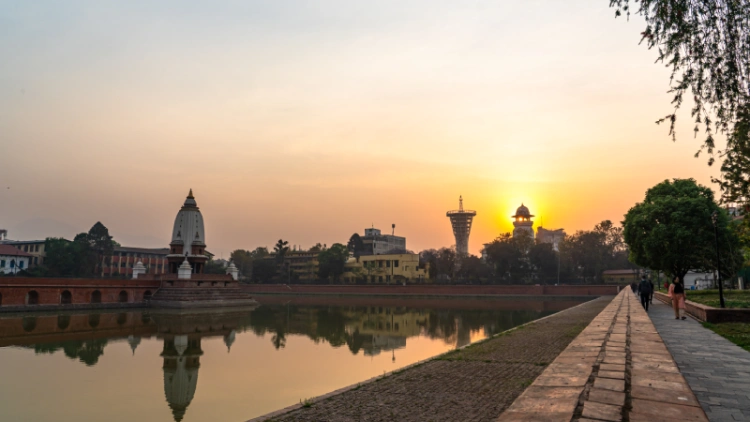Sarnath, located just 10 kilometers from Varanasi, is one of the most important Buddhist pilgrimage sites in the world. It is here that Lord Buddha delivered his first sermon after attaining enlightenment, setting in motion the Wheel of Dharma. For history enthusiasts, spiritual seekers, and travelers alike, Sarnath offers a serene and enriching experience. In this complete travel guide to Sarnath, we’ll cover everything you need to know about this sacred site, including its history, attractions, and practical tips for your visit.
Why Sarnath is a Must-Visit
Sarnath holds immense significance in Buddhism as the place where Buddha shared his teachings of the Four Noble Truths and the Eightfold Path. The site is dotted with ancient stupas, monasteries, and museums that offer a glimpse into the rich history of Buddhism. Whether you’re a history buff, a spiritual seeker, or simply a curious traveler, Sarnath is a place that will leave you inspired.
History of Sarnath
The Birthplace of Buddhism
After attaining enlightenment in Bodh Gaya, Buddha traveled to Sarnath, where he met his five former companions. It was here that he delivered his first sermon, known as the Dhammacakkappavattana Sutta, marking the beginning of his teachings.
The Golden Age of Sarnath
During the reign of Emperor Ashoka in the 3rd century BCE, Sarnath flourished as a major center of Buddhism. Ashoka built several stupas and monasteries, and his famous Lion Capital (now India’s national emblem) was erected here.
Decline and Rediscovery
Sarnath faced decline after the 12th century due to invasions and the fading influence of Buddhism in India. It was rediscovered in the 19th century by British archaeologists, who excavated the site and restored its ancient structures.
Top Attractions in Sarnath
Dhamek Stupa
The Dhamek Stupa is the most iconic structure in Sarnath. Built by Emperor Ashoka, it marks the spot where Buddha delivered his first sermon. The stupa is 43 meters tall and adorned with intricate carvings.
Why Visit:
- It’s a symbol of Buddha’s teachings and the spread of Buddhism.
- The sheer size and historical significance of the stupa are awe-inspiring.
Tips for Visitors:
- Walk around the stupa to admire its carvings and architecture.
- Visit early in the morning or late afternoon for the best experience.
Chaukhandi Stupa
The Chaukhandi Stupa is another important monument in Sarnath. It commemorates the spot where Buddha met his first five disciples.
Why Visit:
- The stupa’s octagonal tower is a unique architectural feature.
- It offers panoramic views of the surrounding area.
Tips for Visitors:
- Climb to the top of the stupa for a bird’s-eye view of Sarnath.
- Combine your visit with the nearby Dhamek Stupa.
Sarnath Archaeological Museum
The Sarnath Archaeological Museum houses some of the finest Buddhist artifacts and sculptures, including the famous Lion Capital of Ashoka.
Why Visit:
- The museum provides a deeper understanding of Sarnath’s history and Buddhism.
- The Lion Capital is a masterpiece of ancient Indian art.
Tips for Visitors:
- Allocate at least 1–2 hours to explore the museum thoroughly.
- Photography is not allowed inside the museum.
Mulagandha Kuti Vihar
The Mulagandha Kuti Vihar is a modern Buddhist temple built by the Mahabodhi Society. It houses beautiful murals depicting the life of Buddha.
Why Visit:
- The temple’s serene atmosphere is perfect for meditation and reflection.
- The murals provide a visual narrative of Buddha’s life and teachings.
Tips for Visitors:
- Attend the evening prayer session for a spiritual experience.
- Explore the nearby deer park, which is part of the temple complex.
Thai Temple and Monastery
The Thai Temple and Monastery is a beautiful example of Thai architecture. It’s a peaceful place to learn about Thai Buddhism and culture.
Why Visit:
- The temple’s golden spire and intricate designs are visually stunning.
- It’s a great place to interact with monks and learn about their way of life.
Tips for Visitors:
- Dress modestly and remove your shoes before entering the temple.
- Respect the temple’s rules and customs.
How to Reach Sarnath
From Varanasi
- By Auto-Rickshaw: A 30-minute ride from Varanasi costs around ₹150–₹200.
- By Taxi: A cab ride takes about 20 minutes and costs ₹300–₹500.
- By Bus: Local buses run frequently between Varanasi and Sarnath, costing around ₹20–₹30.
From Other Cities
- By Train: The nearest railway station is Varanasi Junction, which is well-connected to major cities in India.
- By Air: The nearest airport is Lal Bahadur Shastri International Airport in Varanasi, which is about 25 kilometers from Sarnath.
Tips for Visiting Sarnath
Best Time to Visit
- The ideal time to visit Sarnath is during the winter months (October to March) when the weather is pleasant.
- Avoid visiting during the peak summer months (April to June) due to the intense heat.
What to Wear
- Dress modestly, especially when visiting temples and monasteries.
- Wear comfortable shoes as there’s a lot of walking involved.
Respect Local Customs
- Be mindful of the spiritual significance of the site.
- Avoid loud conversations and maintain a respectful demeanor.
Stay Hydrated
- Carry a water bottle, especially during the summer months.
- There are small shops near the site where you can buy snacks and drinks.
Final Thoughts
Sarnath is a place where history, spirituality, and culture come together. Whether you’re exploring the ancient stupas, learning about Buddhism at the museum, or meditating in the serene temples, Sarnath offers an experience that’s both enriching and inspiring. So, plan your visit, follow the tips, and immerse yourself in the tranquility of this sacred site.

